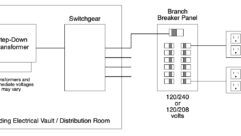Preparing for Power Micro-rates
May 27, 2011 12:32 PM,
By Cynthia Wisehart
At my house, we’ve cut our electric bill in half. We didn’t do it by remembering to turn the lights off when we leave the room. Technology remembers for us. Technology turns off the hot water pump at night; it powers down everything that can be powered down at the outlet level. My husband patrols with a Kill a Watt power-consumption monitor and woe to the widget that draws current when it’s “off”—it will immediately get a curfew. Our Harman amp detects when its partner components have been idle and puts them to sleep.
The driver for this is the newly installed Smart Meter that sits innocently on the side of our house, doing nothing. California is installing millions of them, and they won’t do nothing forever. Before too long they will enable advanced metering infrastructure—micro-rates. It will be more expensive to waste standby power at 3 in the afternoon than at 3 in the morning. We want to be ready.
Likewise, commercial installations will need to be ready. In the not-too-distant future, power will no longer be a giant anonymous overhead expense. It will be measured and billed to business units, to jobs, to customers. Power will have billable hours too.
One company that understands the emerging paradigm is Panamax/Furman. Last year’s introduction of its free BlueBolt platform for consumer installations showed how simple power-saving tasks can implement locally outside of a control system (or in conjunction with one). With BlueBolt, you can remotely power down components from a smart phone; it has various control and measurement tools to help consumers deal with standby and idle power at the outlet level—the low-hanging fruit of power management; and its measurement features foreshadow the coming power-management economy.
This is now translating into commercial inroads, says the company’s John Benz, noting the company now has installations of 50-plus units of BlueBolt-enabled gear in the field. Furman brings two new SmartSequencer power sequencers to InfoComm, the first products in its Contractor series. The units are BlueBolt-enabled and carry a standard control port. However, they go a step further with an RS-232 to Cat-5 dongle that opens them up to a range of control options over Ethernet, Telnet, HTTP, or through BlueBolt. This is ideal for situations where it’s not practical to have a Crestron or AMX interface, or where the design calls for certain power management tasks to be more local. This dongle also opens up hardware to the kind of usage measurement and profiling that will soon be even more important than a Kill a Watt meter.
Correction: In last month’s review of the Lectrosonics Aspen SPN Trio, we greatly understated the I/O specifications. The processor has 30 programmable inputs and 16 programmable outputs. We also greatly understated the overall bandwidth at 10kHz; the correct data is 21kHz.










